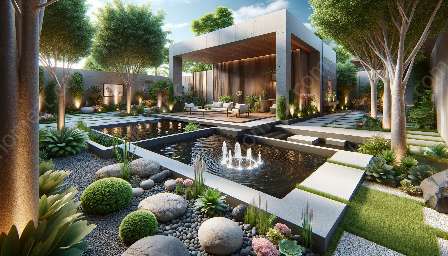Urban areas around the world are constantly evolving, with rapid development often leading to environmental challenges and the loss of green spaces. In the face of such urbanization, ponds have emerged as a valuable tool for addressing these issues. This discussion will explore the urban impacts of ponds and their compatibility with outdoor structures, highlighting the role they play in rejuvenating urban environments and creating sustainable spaces.
Environmental Benefits of Ponds in Urban Areas
Ponds serve as crucial components for urban ecosystems, providing a range of environmental benefits. They can act as natural water filtration systems, purifying stormwater runoff and improving water quality. This helps mitigate the negative effects of urbanization, such as pollution and soil erosion. Additionally, ponds create habitats for diverse wildlife, enhancing urban biodiversity and contributing to ecological balance.
Enhancing Aesthetics and Community Engagement
When integrated with outdoor structures, ponds have the potential to transform urban landscapes, adding aesthetic value and creating tranquil spaces for community engagement. The reflective surfaces of ponds and the sound of moving water attract people, providing opportunities for relaxation and social interaction. These features contribute to the overall well-being of urban residents, fostering a sense of community and belonging in dense, built-up areas.
Rejuvenating Urban Spaces Through Ponds
One of the most significant impacts of ponds in urban areas is their role in rejuvenating deteriorating environments. Ponds have been utilized in urban rejuvenation projects to revitalize neglected areas and create green oases within concrete jungles. By integrating ponds with outdoor structures such as walkways, seating areas, and green spaces, urban planners and landscape architects can significantly improve the quality of urban living while promoting sustainable development.
Compatibility with Outdoor Structures
Ponds are highly compatible with a variety of outdoor structures, offering numerous design possibilities for integrating water features into urban landscapes. Decks, bridges, and viewing platforms can be strategically positioned around ponds to provide unique vantage points and enhance the overall experience. Furthermore, the incorporation of lighting and landscaping elements around ponds can create captivating outdoor environments, making them integral components of urban design and architecture.
Creating Sustainable Urban Environments
The inclusion of ponds in urban development projects contributes to the creation of sustainable environments. Ponds play a crucial role in managing water resources, helping to prevent flooding and replenish groundwater. The strategic placement of ponds within urban areas supports the mitigation of heat island effects and improves microclimate conditions, ultimately promoting urban resilience and sustainability.
Case Studies and Best Practices
Several successful examples of incorporating ponds into urban environments exist worldwide. From the rejuvenation of abandoned industrial sites to the development of public parks and recreational spaces, ponds have been integral to the transformation of urban areas. By analyzing these case studies and best practices, urban planners and developers can gain valuable insights into the effective integration of ponds with outdoor structures, ensuring the creation of vibrant, sustainable urban landscapes.



